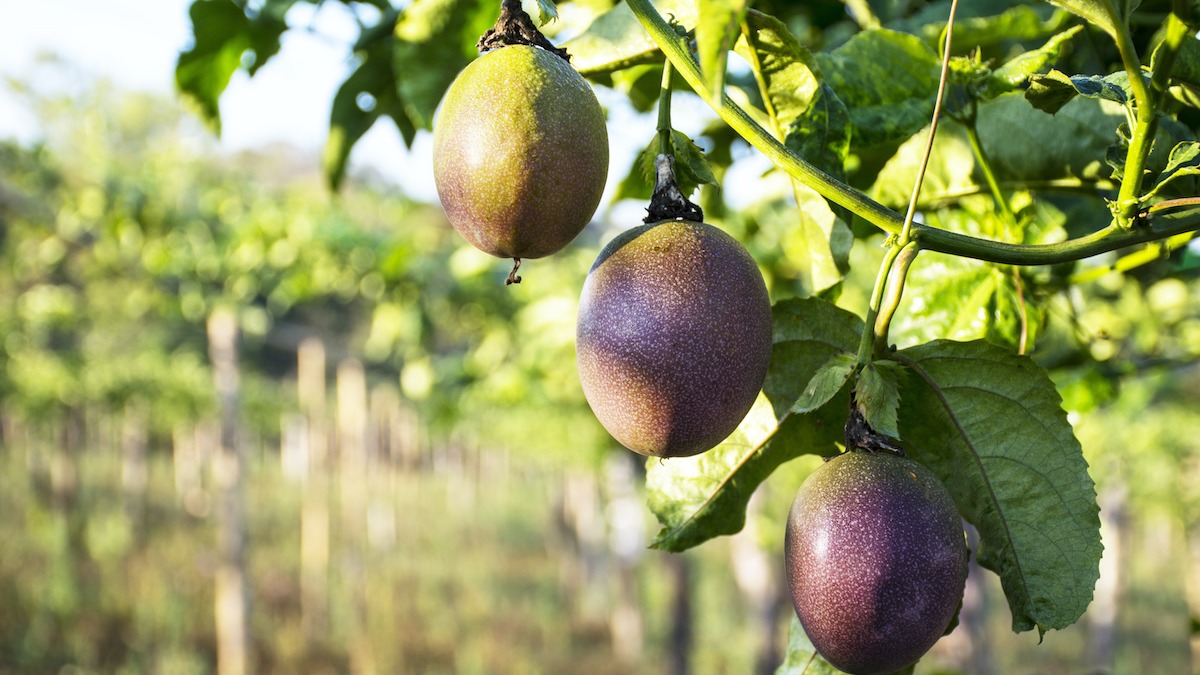Planting Passion Fruit Seeds
Choosing the Right Seeds:
Freshness Matters: Opt for fresh seeds from ripe fruits.
Seed Extraction: Carefully extract seeds from the pulp, wash them thoroughly, and allow them to dry completely.
Scarification: Lightly nick the seed coat to aid germination.
Sowing: Plant the seeds in well-draining potting mix, about 1/4 inch deep.
Germination Conditions: Maintain warm temperatures (around 75-85°F) and high humidity.
Patience is Key: Germination can take several weeks.
Growing Passion Fruit Vines
Sunlight:
Full Sun: Passion fruit vines thrive in full sunlight.
Optimal Light: Ensure they receive at least 6-8 hours of direct sunlight daily.
Soil:
Well-Draining Soil: The soil should be well-draining to prevent root rot.
Soil pH: A slightly acidic to neutral pH (6.0-7.0) is ideal.
Nutrient-Rich Soil: Enrich the soil with organic matter like compost or well-rotted manure.
 How to Grow Passion Fruit from SEED
How to Grow Passion Fruit from SEED
Watering:
Regular Watering: Water deeply and regularly, especially during dry periods.
Avoid Waterlogging: Overwatering can lead to root problems.
Moisture Check: Allow the top inch of soil to dry out slightly between waterings.
Temperature:
Warm Climate: Passion fruit vines prefer warm climates.
Frost Protection: Protect them from frost, as it can damage the vines.
Support Structure:
Climbing Vine: Provide a sturdy support structure like a trellis or fence.
Training the Vine: Train the vine to climb the support to maximize fruit production.
Fertilizing Passion Fruit Plants
Fertilizer Timing:
Spring and Summer: Fertilize during the growing season, typically in spring and summer.
Balanced Fertilizer: Use a balanced fertilizer with a ratio of 10-10-10 or a higher potassium content (like 10-5-20).
Organic Fertilizers: Organic fertilizers like compost tea or fish emulsion can be beneficial.
Avoid Over-Fertilization: Excessive fertilization can lead to lush foliage but fewer flowers and fruits.
Encouraging Blooming and Fruiting
 How to Grow Passion Fruit From a Seed or Seedling – – MasterClass
How to Grow Passion Fruit From a Seed or Seedling – – MasterClass
Pollination:
Self-Pollination: Some varieties are self-pollinating.
Hand Pollination: For other varieties, hand-pollination may be necessary, especially in enclosed spaces.
Pollinator Attraction: Attract pollinators like bees and butterflies by planting flowers nearby.
Pruning:
Regular Pruning: Prune the vine regularly to remove dead, diseased, or crossing branches.
Fruiting Spur Formation: Encourage the formation of fruiting spurs by pruning the vine to a desired shape.
Harvesting Passion Fruit
Ripeness:
Color Change: The fruit will change color when ripe.
Fruit Firmness: The fruit should be firm but slightly yielding to gentle pressure.
Harvest Timing: Harvest the fruit promptly to prevent it from over-ripening on the vine.
Storage:
Refrigeration: Store ripe passion fruit in the refrigerator for a few days.
Freezing: Passion fruit can be frozen for longer storage.
 How To Grow Passion Fruit From Seed Meluth
How To Grow Passion Fruit From Seed Meluth
Enjoy Your Harvest:
Versatile Fruit: Passion fruit can be used in various culinary applications, including juices, smoothies, desserts, and sauces.
By following these guidelines, you can successfully cultivate healthy and productive passion fruit plants.



